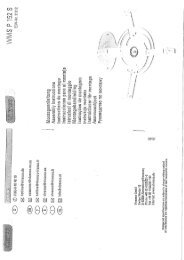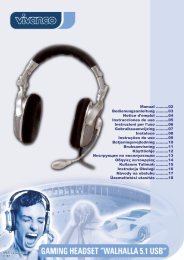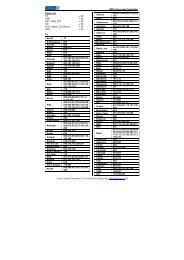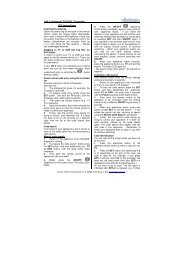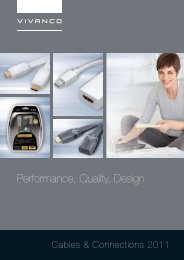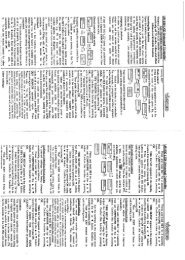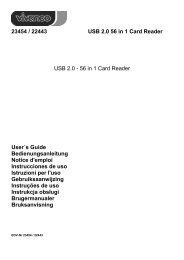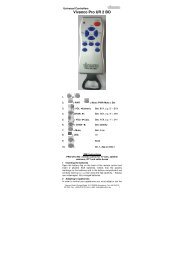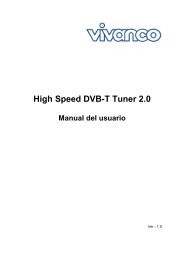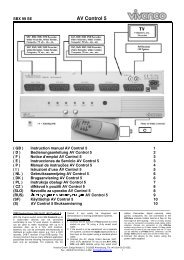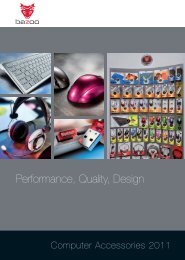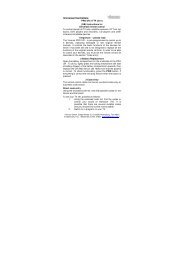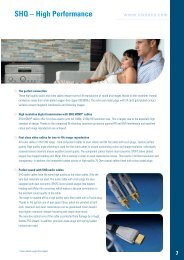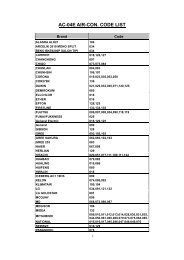computer
computer
computer
You also want an ePaper? Increase the reach of your titles
YUMPU automatically turns print PDFs into web optimized ePapers that Google loves.
Communications cables<br />
ADSL/T-DSL<br />
– For rapid Internet access<br />
Every Telekom customer can get ADSL, irrespective of whether the connection is<br />
analog or ISDN.<br />
The existing telephone set-up is not changed.<br />
The analog connection carries an additional data signal alongside the telephone signal.<br />
Calls can still be received, even when on line.<br />
Where ISDN is combined with ADSL/T-DSL, telephone calls, fax messaging and Internet<br />
surfing can be conducted simultaneously.<br />
Two additional devices are needed to use ADSL / T-DSL:<br />
- An ADSL / T-DSL splitter and an ADSL / T-DSL modem.<br />
The splitter separates the ADSL / T-DSL signals from the normal telephone signals.<br />
Pay particular attention that the splitter is fitted in front of the terminal device.<br />
The modem provides high-speed access to the Internet.<br />
US / Western<br />
This technology, normally called US, or Western Technology, is mainly to be found in<br />
the USA and the United Kingdom. Bearing in mind the ISDN connection technology,<br />
(Integrated Services Digital Network) this technology will be of increasing significance<br />
in Germany as well. Depending on intended use, we distinguish in this case between<br />
4 pin (telephone), 6 pin or 8 pin (accessory equipment) connection sockets or plugs.<br />
TAE<br />
As a new method of installation on the public telephone network, German firms,<br />
working on behalf of the Bundespost (German Post Office), have developed the<br />
Telecommunications Connection Units (Telekommunikations Anschluss Einheiten<br />
(TAE)). They are interface connectors for the connection of telephone equipment or<br />
accessories in different areas. In the long term, TAE will replace the previously<br />
common methods of connection (VDo, ADo). They conform to DIN 41715.<br />
Due to system modularity, compact sockets for the 2-way and 3-way plug connectors<br />
are also available. The plug system is based on a 6 pin basic configuration. They will<br />
be divided into F codification (for telephone equipment) and N codification (for<br />
non-telephone equipment, like answering machines, telex or data transfer equipment).<br />
This will ensure that there will be no confusion of plugs.<br />
www.vivanco.com<br />
What does ADSL mean?<br />
- Asymmetric Digital Subscriber Line<br />
- High-speed access to the World Wide Web<br />
- Applications that are not possible with<br />
analog modems or ISDN.<br />
- Page creation in seconds<br />
- Downloading in record time<br />
- Superb quality film and music videos<br />
Data rates ADSL / T-DSL:<br />
Downloads = ADSL / T-DSL 768 kbit/s<br />
12 x faster than ISDN<br />
30 faster than an analog<br />
modem<br />
Uploads = ADSL / T-DSL 128 kbit/s<br />
Downloads im comparison:<br />
768 kbit/s = ADSL /T-DSL<br />
64 kbit/s = ISDN<br />
28,8 kbit/s = analog modem<br />
4=E<br />
5=b2 6=a2 TAE N<br />
N<br />
3=W<br />
2=b<br />
1=a<br />
4=E<br />
5=b2 6=a2 TAE F<br />
F<br />
3=W<br />
2=b<br />
1=a<br />
Others<br />
143



